Partner with UTS Rapido – the multi-disciplinary R&D innovation hub with professional R&D engagement and project management
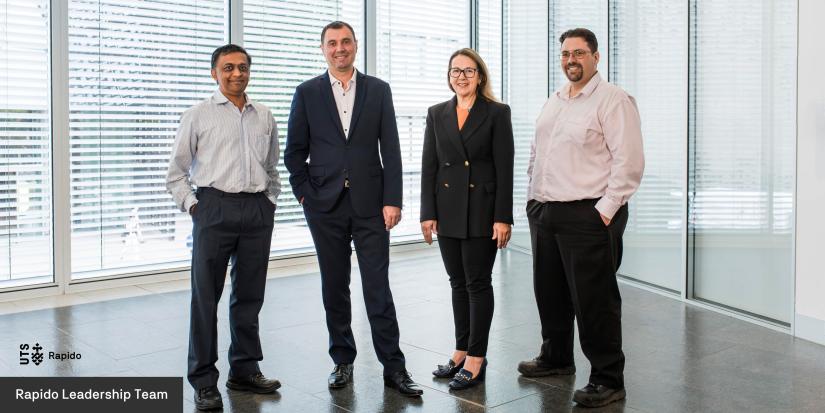
Why partner with us?
Our industry and social impact partners gain access to professional engineers, R&D experts and skilled project managers who collaborate with UTS world-class researchers, facilities and labs.
We bridge the gap between academia and industry, unlocking new possibilities for individuals, organisations, and communities to thrive through the power of information technology and engineering. Our experts in software, mechatronics, UX and digital solutions innovate new products and services for our clients.
Talk to us about your upcoming project
Whether you’re a startup, a corporation, or a not for profit, our commercially focused R&D team can manage your project through our university-wide innovation ecosystem.
Download the UTS Rapido brochure >>>
Explore some of our industry projects below:
Stryker
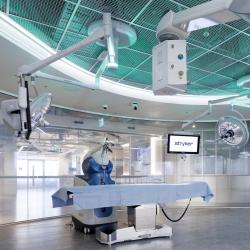
We used expertise in 3D geometry processing to develop a new automated software platform for virtual surgical planning, enabling users to easily design surgical models, implants, and bone cutting guides for 3D printing. This reduced the burden on highly specialised overseas design personnel, and accelerated access to treatment for patients. The current findings and future iterations of this work have the potential for significant international impact. Read more here: Cutting edge software brings custom surgical implants to life.
Read more: Stryker
Stryker is a global leader in medical technologies and, together with its customers, is driven to make healthcare better. This research collaboration between global medical technology leader Stryker, UTS Rapido and the Digital Health Cooperative Research Centre has developed a digital platform to streamline the design of patient-specific surgical solutions using 3D printing.
"This project makes an important contribution to the increased personalisation of patient- specific healthcare, where tools and treatments are individualised to achieve optimised outcomes for each patient. By empowering surgeons and users with digital tools for design and planning, we can reduce the time to surgery and improve overall patient care. This is a key step toward more agile solutions in healthcare," Rob Wood, Senior Director of R&D, Stryker.
| Need | Innovation | Project outcome |
|---|---|---|
Surgical implants designed and manufactured to precisely fit an individual’s anatomy can reduce operation times and improve patient outcomes. The usual design of personalised surgical products is complex and time-consuming, involving highly skilled personnel and detailed surgeon input. Stryker needed a digital platform to streamline the design of patient-specific surgical solutions using 3D printing. | We used expertise in 3D geometry processing, a technique that creates precise 3D computer models of real objects using a combination of applied mathematics, computer science and engineering, to develop an advanced software solution. | An automated software platform for virtual surgical planning, enabling users to easily design surgical models, implants, and bone cutting guides for 3D printing. A reduced burden on highly specialised overseas design personnel, and accelerated access to treatment for patients. The current findings and future iterations of this work have the potential for significant international impact. |
Mineral Technologies
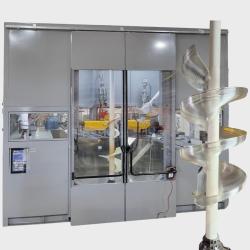
Tasked with disrupting the mining industry by 3D printing on-site gravity spiral separators (GSS). Rapido replaced traditional manufacturing of the separators with Industry 4.0 production through the development of a large scale bespoke 3D printer. As part of the project, IoT sensors were embedded to enable remote monitoring and automation of GSS. The increased design flexibility can reduce labour and time cost; improving health and decreasing environmental impact during production.
Read more: Mineral Technologies
Mineral Technologies partnered with UTS Rapido to overcome challenges in manufacturing gravity spiral separators. Using advanced 3D printing, they aimed to streamline production, reduce costs, and improve customisation for enhanced efficiency in mineral processing.
Gravity spiral separators are commonly used in the mineral processing sector to separate heavy and often valuable minerals (such as gold, coal and iron ore) from their lighter counterparts. These separators, which are constructed from materials such as polyurethane or fibreglass and matched to the specific properties of the ore bodies they’re designed to separate, are used at mining sites around the world.
Spiral separators are a vital component of their product offering, but they come with significant limitations. These include a time-consuming and costly open moulding fabrication process, which limits the company’s capacity to produce customised separators and to respond quickly to large orders to the tooling they have available. Production takes place at a dedicated facility on the Gold Coast; the separators — which are up to 12 metres in height — are then shipped at significant expense to client sites.
The project speaks to the potential of novel technologies to disrupt established industries in unexpected ways and the power of university-led research to deliver rigorous, technology-enabled, commercially relevant solutions.
| Need | Innovation | Project outcome |
|---|---|---|
The Rapido team were asked to investigate opportunities to build a bespoke 3D printing prototype with the capability to custom-print gravity spirals of up to 3 metres tall. One of the key objectives was to print without support material, thereby minimising material costs and manufacturing time. | The project commenced with a feasibility study to confirm 3D printing as the preferred manufacturing process and to determine the optimal printer configuration for printing the target part. The solution developed by the Rapido team leveraged non-planar 3D printing to achieve this with a bespoke machine configuration paired with a purpose-built custom slicing algorithm optimised for the creation of the target parts. | The result is Sidewinder, a bespoke 3D printer prototype that can produce customised spirals for different target ore bodies. Sidewinder enhances the accuracy of the mineral separation process, increasing mining yields and improving the quality of the resulting mineral concentrates. It has the potential to decentralise the spiral production process and ship the printer to where new spirals are needed at that time. |
Navantia Australia - Training Gamification
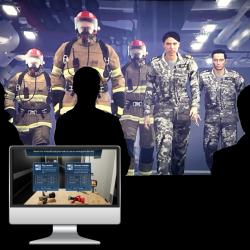
Rapido has collaborated closely with Navantia Australia since mid-2020 to deliver R&D projects, with ongoing collaborations around digital twin, ship routing, training gamification, situational awareness systems, and anomaly detection using deep learning models. Our software and UX teams are at the forefront of our collaboration, with the aim of developing sovereign digital technologies for the maritime industry. This partnership led to a bigger collaboration between UTS and Navantia Australia, culminating in the joint institute: Marintec - the Maritime Institute of Technology.
Read more: Navantia Australia - Training Gamification
Collaboratively with Navantia Australia and Eye Candy Animation, we defined, designed and developed cutting-edge training solutions for the defence sector.
The team developed a series of immersive gaming experiences, providing opportunities for individual and multiplayer participation. Based on user-experience research, this training experience served as the foundation for a wide range of educational outcomes. It not only imparts practical skills and procedural knowledge but also fosters key attitudes and mindsets such as teamwork, confidence and camaraderie.
The versatility of this scaffold serves as the basis for various formats and types of educational games. Whether it's fast-paced, adrenaline-filled multiplayer combat or highly engaging exploratory sandbox or puzzle games, the possibilities are endless.
What makes training gamification so compelling? Gamification of training content aims to boost learners' engagement, motivation and learning outcomes. By transforming the training experience into one that is immersive, interactive and challenging, gamification enhances enjoyment levels and overall impact of the training experience.
| Need | Innovation | Project outcome |
|---|---|---|
Boost Navy sailors, trainers, and captains' productivity and confidence with remote training solutions that foster camaraderie, streamline learning, and reduce reliance on costly traditional methods. | UX research, game design and mechanics, 2D game interfaces and 3D environments including avatars. Electronic 3D prototypes tested on multi-platformthin-thick client architecture. | Remote access to gamified training that maximises exposure and experience in work practices resulting in accelerated learning, increased knowledge retention, collaboration and work culture experiences, higher satisfaction and enjoyment. |
Quokka Quantum
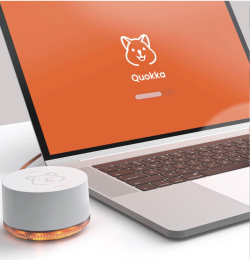
The Rapido software and mechatronics team assisted academics Christopher Ferrie and Simon Devitt on the early prototype that paved the way to the first consumer-friendly quantum computer. This project is a great example of research translation, that led to a blending of sophisticated mechatronics and robust software engineering. From developing a quantum simulator on a Raspberry Pi to crafting an intuitive cross-platform mobile app and an elegant aluminium enclosure, our team demonstrated the power of having multiple R&D capabilities under one roof; software, mechatronics and digital services expertise. Learn more about Quokka Quantum.
Read more: Quokka Quantum
This project helped translate research into a world-first consumer quantum product. The Quokka Quantum is an affordable, fit-in-the-hand personal quantum computer emulator that can run programming languages written for quantum computing and return results.
“We’re looking to revolutionise the way people learn about quantum computing and STEM education in general. The Quokka platform, including the device, is a tool for hands‑on learning. It acts as a fault‑tolerant quantum computer, unlike other quantum simulators." Chris Ferrie, Associate Professor, Centre for Quantum Software and Information (QSI)
| Need | Innovation | Project outcome |
|---|---|---|
UTS researchers needed a working prototype to demonstrate how quantum computing could be made accessible to non-specialists. UTS Rapido was engaged to translate early-stage research into a functional, manufacturable device that could support learning, experimentation and future commercialisation. |
|
|
OMNIA Wheel (Rotacaster)
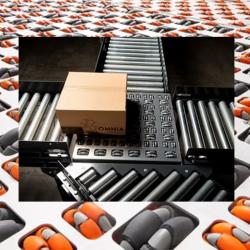
Rapido helped develop an efficient multi-directional, modular conveyor transfer station using omni-directional wheels to replace current larger, single-direction, industry standard transfer stations. The Rapido team used omni-directional wheels with minimal wheel space to guarantee efficient and accurate manipulation. We also embedded light sensors to execute dynamic manipulation processes. The compact, modular design allowed for custom, situational conveyor builds that are now sold globally. Learn more about the Omnia Wheel project.
Read more: OMNIA Wheel
"We went to Rapido because we had limited resources and limited access to testing equipment, and the high-level research we needed to do to understand the disruption potential of our wheel. They were able to do a lot of testing for us, so we got a lot of data back that enabled us to start developing a conveyor table and understand how to simulate outcomes from different configurations," Peter McKinnon, OMNIA Managing Director.
| Need | Innovation | Project outcome |
|---|---|---|
Modelling, testing and prototyping of a potential conveyor sortation system utilising a new omni directional wheel, designed for commercial use to help optimise sortation logistics, reduce breakdowns, downtime and costs. Digital twin modelling was needed to simulate outcomes from different configurations and help understand the disruption potential of the OMNIA wheel in the logistics sector. |
| The testing paved the way to the development of OMNIA’s Omni Directional Sortation System, a sortation table that can be used as an independent cell or integrated into complex, networked conveyor systems. Unlike standard sortation systems, which often use roller belts, swivels or pneumatic components, the OMNIA system is based on two different sizes of omni wheels arranged at 90 degrees to one another. It can be used as an independent unit for multidirectional diversion and sortation or combined with other units to complete complex tasks such as RFID scanning, printing and labelling. |
Zurich

A data-driven AI project to help optimise the underwriting process and enhance proactive health services. We developed advanced Artificial Intelligence (AI) models capable of making immediate decisions on applications with mental health disclosures, without requiring external medical reports. AI helped build advanced predictive data models, and machine learning identified potential uncollected data that can be overlaid to support underwriting decision-making and inform proactive health strategies. This offers Zurich the opportunity to quickly and reliably assess health risks and offer pre-emptive wellbeing strategies.
Read more: Zurich
Zurich Financial Services Australia partnered with UTS Rapido to address a critical challenge in life insurance underwriting: the lengthy and often invasive process of assessing applications involving mental health disclosures. Over a six-month period, the collaboration produced advanced Artificial Intelligence (AI) models capable of making immediate decisions on applications with mental health disclosures, without requiring external medical reports.
| Need | Innovation | Project outcome |
|---|---|---|
The project aimed to apply machine learning to model Zurich’s existing underwriting approach, improve decision consistency, and identify the key questions that influence outcomes, with the goal of simplifying the application process. Applications involving mental health disclosures often required additional information such as a doctor's report, which could delay decisions by up to 22 days. The project sought to streamline this through AI models that support faster, more consistent underwriting. |
| We developed AI models capable of making immediate decisions on applications with mental health disclosures, without requiring external medical reports. The AI models will be used to verify decisions made by Zurich’s underwriting team and the existing rules engines they use, in keeping with Zurich’s AI philosophy to ‘always keep a human in the loop’. |
Energy Industry Partner

A detailed circuit and mechanical design project that aims to convert existing grid infrastructure into a source of clean, reliable power—particularly for hard-to-reach locations where diesel generators or solar panels are currently the norm. This R&D project includes a feasibility study on wirelessly harvesting energy from high-voltage powerlines. The project brings together a multidisciplinary team of engineers, researchers, and industry experts. Field trials will be conducted at Charles Sturt University’s AgriPark, ensuring the technology is tested in real-world rural and regional conditions.
Read more: Energy Industry Partner
This is a bold, future-focused initiative led by the University of Technology Sydney (UTS), in partnership with Charles Sturt University (CSU) and industry sponsors. The project, titled 'Cost-Effective Wireless Energy Harvesting from High Voltage Powerlines,' is developing breakthrough technology that could transform how remote telecommunications infrastructure is powered. By wirelessly harvesting energy from high-voltage powerlines, the team aims to convert existing grid infrastructure into a source of clean, reliable power—particularly for hard-to-reach locations where diesel generators or solar panels are currently the norm.
A collaborative effort with real-world impact
The project brings together a multidisciplinary team of engineers, researchers, and industry experts. UTS Rapido is leading the technical development and CSU contributes deep expertise in energy systems. Field trials will be conducted at Charles Sturt University’s AgriPark, ensuring the technology is tested in real-world rural and regional conditions.
Why It Matters
One potential use case involves powering remote telecommunications towers, which are vital for connectivity across regional and remote Australia. Traditionally, these towers rely on diesel generators which can be expensive, carbon-intensive, and difficult to maintain. While solar panels offer a cleaner alternative, they can be unreliable in shaded or weather-affected environments. This project offers a third path; leveraging the proximity of transmission lines to deliver consistent, renewable energy without the need for new generation infrastructure.
If successful, the technology could be deployed across Australia’s grids in the future, potentially supporting not only telecommunications but also other remote sensing and monitoring applications critical to agriculture, emergency services, and environmental management.
This initiative is one of several funded under the EESN Seed Grant Scheme, a NSW Government funded program designed to accelerate early-stage innovations in electrification and energy systems. The scheme supports projects that align with the state’s clean energy transition goals, particularly those that can deliver scalable, practical solutions to pressing energy challenges.
| Need | Innovation | Project outcome |
|---|---|---|
| By wirelessly harvesting energy from high-voltage powerlines, the team aims to convert existing grid infrastructure into a source of clean, reliable power—particularly for hard-to-reach locations where diesel generators or solar panels are currently the norm. | We explored a novel wireless energy harvesting system capable of safely extracting usable power from the magnetic field of high-voltage powerlines, eliminating the necessity for a direct physical connection. We developed an advanced proof-of-concept prototype and secured additional funding to progress to the next stage. We collaborated with Professor Dylan Lu and the UTS School of Electrical and Data Engineering to develop an advanced proof-of-concept prototype. |
|
PolySpine
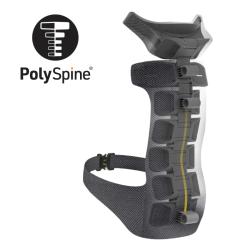
PolySpine aims to transform the lives of people with moderate to severe physical disability, opening the door to beach trips, aeroplane flights, canoeing excursions and more. Working with a prototype of the exoskeleton, the Rapido engineering team mapped out a plan for PolySpine’s Conformity Assessment — to demonstrate compliance with the TGA’s essential safety and performance principles — leveraging the specialised UTS labs and facilities. This led to PolySpine successfully taking their product to market. Learn more about PolySpine.
Read more: PolySpine
PolySpine were looking for support with their commercialisation, TGA essential safety and performance compliance for their wearable exoskeleton. “We came in with a list of tests — and Rapido identified all the others we hadn’t thought of. They were just so competent; they understood exactly what we needed to achieve,” Jasmine Sayour, Managing Director, PolySpine.
| Need | Innovation | Project outcome |
|---|---|---|
PolySpine’s wearable exoskeleton supports people with limited mobility, but it needed to meet strict safety and performance standards for TGA approval. They lacked the specialist facilities and engineering expertise required for compliance testing and validation. | Designed and delivered a full validation testing program using university-grade labs and equipment. Tests covered strength, durability, flammability, toxicity, and product lifespan. The results led to design improvements and provided the evidence needed for regulatory approval. | PolySpine met the stringent medical device compliance standards and confidently moved into commercial production. The device passed all required safety and performance tests, secured ARTG approval in 2021, and launched the following year. Now listed on the NDIS and under review by the US FDA, PolySpine is enhancing mobility and inclusion for users nationwide. Added key product improvements and the creation of two new jobs. |
Orion Consulting
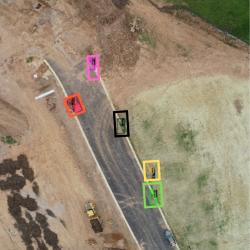
This project to detect public infrastructure from existing drone footage using computer vision techniques, drastically reduced the cost of human effort to map, locate and model public assets. The team developed automatic object detection algorithms with AI capability to detect NBN pits, storm water drains and electrical pillars. Objects were localised in 3D using Metashape commercial software.
Read more: Orion Consulting
“The work we're doing with UTS Rapido is a quantum shift in our industry and it will allow us to make smarter and more efficient investment decisions,” Philip Byrum – Orion Consulting Director
| Need | Innovation | Project outcome |
|---|---|---|
| Detect public infrastructure from existing drone footage using computer vision techniques. | Automatic object detection algorithms with AI capability to detect NBN pits, storm water drains and electrical pillars. Objects were localised in 3D using Metashape commercial software. | Drastically reduced the cost of human effort to map, locate and model public assets. |
FlexiFab 3D Printer
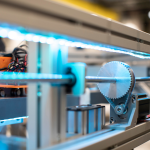
A UTS student designed an open research platform 3D printer, which is capable of multiple additive manufacturing processes with modular construction and a tilting bed. The tilting bed strengthens construction by allowing better control of material grain structure. By reducing the need for printing supports and print time, it means that costs and post processing activities are all reduced. Its continuing development and open design encourages further research and application into additive manufacturing.
SPEE3D Printer
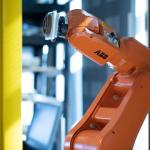
Efficient 3D printing with metal? This project innovates in the area of metal 3D printing in a way that is cost-effective, and friendly towards large-scale manufacturing. This revolutionary method replaces traditional metal manufacturing casting by 3D printing, using metal powder. Rapido used 'machine vision' and 3D scanning to automate the refining process of 3D printing – ultimately leading to the minimisation of post processing work.
Water Co

The task was to transform the multi-franchise pool manufacturer into a united, cloud-optimised business with integrated IoT technology, data analytics and the potential for remote pool monitoring. Rapido developed an active interconnected cloud interface with added data analytics and a pool maintenance booking system to ease the maintenance process for customers and franchisees.
Downer - Dwell Track
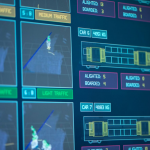
We assisted rail operators to maintain the on-time running of trains by providing insights into commuter movements on/off trains and along the platform edge. Leveraging algorithms developed by researchers in the Centre for Autonomous Systems (CAS), Rapido designed and built a hardware and software platform that tracks individuals in densely populated crowds using 3D sensing. A real-time dashboard was created to aggregate commuter movements with train information; providing platform staff with a single source of information to better manage train departures.
More Social Impact case studies here:
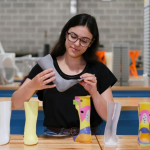
Since 2017, Rapido has donated significant time and resource to purposeful organisations to create positive change. Whether you’re an NFP, a for-profit, or any other socially-conscious organisation, Rapido can provide world leading technological expertise and facilities, to develop cutting edge products and services. Read more about our Social Impact case studies here.

